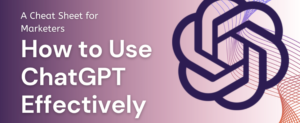In today’s digital age, having access to artificial intelligence tools like ChatGPT can be incredibly beneficial, but it’s important to know how to use them properly. ChatGPT is a language model that can answer questions and engage in conversation, making it a useful resource for everything from getting answers to academic research questions to having fun, informal chats. However, to get the most out of ChatGPT, it’s important to understand its capabilities and limitations, as well as how to ask questions and provide context effectively. In this article, we’ll provide you with tips and techniques for how to use ChatGPT effectively, as well as best practices for ensuring privacy and ethical considerations. So let’s get started and learn how to make the most of this powerful AI tool!
Familiarizing Yourself with ChatGPT
Familiarizing yourself with ChatGPT is the first step towards using it effectively. ChatGPT is a natural language processing model developed by OpenAI that can understand and generate human-like text. It is designed to answer questions, complete sentences, and engage in conversation with users.
To access ChatGPT, you can use a web interface or API provided by OpenAI. Once you have access, it’s important to understand the types of questions ChatGPT can answer. ChatGPT is trained on a large corpus of text data and can answer a wide range of questions, from general knowledge queries to complex research questions. However, it is important to note that ChatGPT may not always have the most accurate or up-to-date information, so it’s important to verify answers when possible.
It’s also important to understand how ChatGPT generates responses. ChatGPT uses a deep learning algorithm that analyzes text inputs and generates responses based on patterns in the data it has been trained on. The responses may not always be perfect or entirely relevant to your question, but ChatGPT is constantly learning and improving its responses based on user feedback.
Familiarizing yourself with ChatGPT is an important first step towards using it effectively. By understanding its capabilities and limitations, you can get the most out of this powerful AI tool.
So, How to Use Chatgpt Effectively?
Here are some tips for using ChatGPT effectively:
- Be clear and specific with your questions: When asking ChatGPT a question, be as clear and specific as possible. Avoid using ambiguous language or asking multiple questions at once, as this can confuse the model and lead to inaccurate or irrelevant responses.
- Use proper grammar and spelling: ChatGPT is designed to understand and generate human-like text, so using proper grammar and spelling can improve its ability to generate accurate and readable responses.
- Provide context when necessary: If your question requires additional context, provide it to help ChatGPT understand the question better. For example, if you’re asking a research question, provide some background information to help ChatGPT understand the context of the question.
- Don’t rely solely on ChatGPT for important decisions: While ChatGPT can provide useful information, it should not be relied on solely for important decisions. Always verify the information provided by ChatGPT with other sources to ensure accuracy.
- Keep conversations short and focused: ChatGPT is designed to generate short responses, so it’s important to keep conversations short and focused. Avoid asking multiple questions at once or engaging in lengthy conversations, as this can cause ChatGPT to become confused or provide irrelevant responses.
By following these tips, you can improve your experience with ChatGPT and get more accurate and useful responses.

Advanced Techniques for Using ChatGPT
If you’re looking to get the most out of ChatGPT, there are a few advanced techniques you can try:
- Use prompts to guide the conversation: ChatGPT responds best to specific prompts, so using them can help guide the conversation and improve the relevance of its responses. For example, instead of asking a general question, provide ChatGPT with a specific prompt, such as “Tell me about the history of the Eiffel Tower.”
- Utilize the built-in knowledge base and pre-trained models: ChatGPT comes with a built-in knowledge base and pre-trained models that can help it generate more accurate and relevant responses. For example, you can use the pre-trained model for certain domains, such as finance or healthcare, to get more specialized responses.
- Customize the model by fine-tuning with your own data: If you have a specific dataset or domain-specific information, you can fine-tune the ChatGPT model to generate more accurate and relevant responses. This requires some technical expertise, but can significantly improve the quality of responses for specific use cases.
By using these advanced techniques, you can improve the accuracy and relevance of ChatGPT’s responses and get the most out of this powerful AI tool.
Best Practices for Using ChatGPT
When using ChatGPT, it’s important to follow some best practices to ensure privacy and ethical considerations:
- Respect privacy and personal data: When using ChatGPT, avoid sharing personal information or sensitive data that could compromise privacy. Keep in mind that ChatGPT’s responses are generated based on the information you provide, so be cautious about the information you share.
- Avoid using ChatGPT for malicious purposes: ChatGPT is a powerful tool, but it should not be used for malicious purposes, such as spreading misinformation or engaging in illegal activities.
- Acknowledge that ChatGPT is not perfect: ChatGPT is constantly learning and improving, but it is not perfect. Keep in mind that its responses may not always be accurate or relevant, and always verify the information provided by ChatGPT with other sources.
- Use ChatGPT ethically and responsibly: When using ChatGPT, be mindful of ethical considerations, such as avoiding biases or perpetuating harmful stereotypes.
- Provide feedback to improve the model: ChatGPT’s responses are based on the data it has been trained on, so providing feedback can help improve its accuracy and relevance. If you notice any errors or inaccuracies in ChatGPT’s responses, provide feedback to help improve the model.
By following these best practices, you can use ChatGPT in a responsible and ethical manner and help ensure that it remains a valuable tool for everyone to use.
In conclusion, ChatGPT is a powerful tool that can help us generate human-like text responses to questions and prompts. By following best practices and utilizing advanced techniques, we can use ChatGPT effectively, responsibly, and ethically. Whether you’re using it for personal or professional purposes, ChatGPT can be a valuable tool for generating text responses and improving productivity.
FAQs:
Q: What is ChatGPT?
A: ChatGPT is an artificial intelligence (AI) tool that uses natural language processing to generate human-like text responses to questions and prompts.
Q: How to use ChatGPT effectively?
A: To use ChatGPT effectively, be clear and specific with your questions, use proper grammar and spelling, provide context when necessary, don’t rely solely on ChatGPT for important decisions, and keep conversations short and focused.
Q: What are some advanced techniques for using ChatGPT?
A: Some advanced techniques for using ChatGPT include using prompts to guide the conversation, utilizing the built-in knowledge base and pre-trained models, and customizing the model by fine-tuning with your own data.
Q: What are some best practices for using ChatGPT?
A: Best practices for using ChatGPT include respecting privacy and personal data, avoiding using ChatGPT for malicious purposes, acknowledging that ChatGPT is not perfect, using ChatGPT ethically and responsibly, and providing feedback to improve the model.
Q: How can I improve the accuracy of ChatGPT’s responses?
A: To improve the accuracy of ChatGPT’s responses, you can use specific prompts, utilize the built-in knowledge base and pre-trained models, fine-tune the model with your own data, and provide feedback to improve the model.



![Async Await c# Error Handling [SOLVED!]](https://mycodebit.com/wp-content/uploads/2023/10/rich-tervet-q2GNdFmhxx4-unsplash-360x240.jpg)

![How to Handle Divide by Zero Error in c# [Complete Guide]](https://mycodebit.com/wp-content/uploads/2023/10/clement-helardot-95YRwf6CNw8-unsplash-360x240.jpg)
